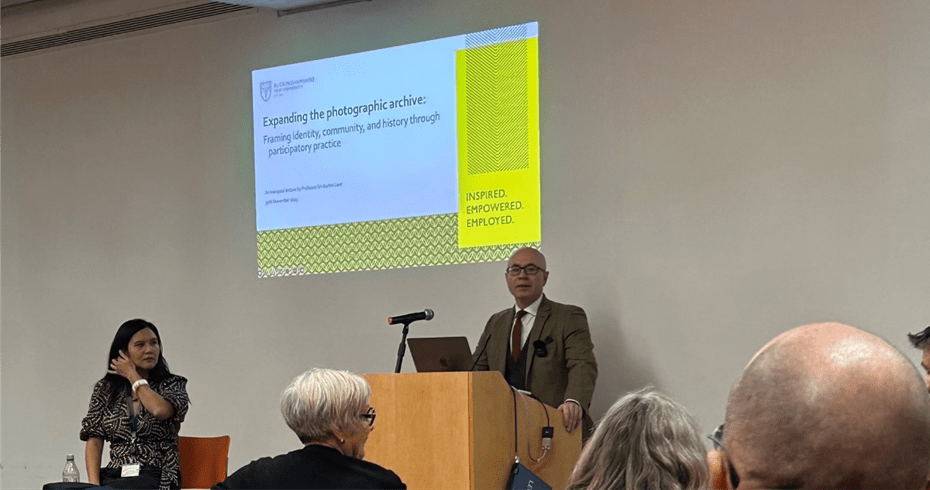
Professor Sri-Kartini Leet delivers inaugural lecture
Professor Sri-Kartini Leet delivered her first inaugural lecture ‘Expanding the photographic archive: Framing identity, community and history through participatory practice’ to an engaged audience in the Gateway Lecture Theatre at Buckinghamshire New University (BNU).
The lecture, opened by BNU's Deputy Vice-Chancellor Professor Damien Page, centred on the notion of identity and the idea of ‘home’ explored within the realms of photography, alongside the early history of the practice and its use of visual representation. Professor Leet shared her previous three projects with the audience, I Dream of Home, Homeplaces, and, her most recent, Amersham Roots. All three projects embraced the input and voices of members of the communities that were engaged with.

The audience was interested to learn about some early uses of photography, it was common for the practice to be used to assert power and maintain control of those who were believed to be inferior, such as those viewed to be mentally ill. Further, it was learned that those photographed were usually subjects of ethnic and criminal typologies, facing racial and social discrimination. Examples of early usage of photography as means for control can be tracked back to the mid-1800s, where police introduced the ‘mugshot’ to capture images of criminals. Professor Leet explained that photography began to play an important role in the scientific explanation of the ‘other’ and/or anthropology, leading to those deemed as inferior being portrayed as specimens rather than human beings, a norm for photographic use at the time.
The ‘mugshot’ is still used today within the criminal justice system, though the development of photography over the years and what an image can convey has been pivotal, as reflected in Professor Leet’s most recent participatory projects. The project I Dream of Home is reflective of the relationship people have to the past and how a photograph can feature within this, as well as the ways in which just one photograph can tell an entire story. 90 participants were asked to donate an image which they regard as symbolic of their idea of ‘home’, whether a physical place or linked to their own philosophy of life.
Another of Sri-Kartini’s participatory projects discussed was Homeplaces, a visual exploration of migration memory and photography. This was an intergenerational project looking into the experiences of migration and how the narratives passed from one generation to the next, which involved taking photographs of the participants in their homes.
Professor Leet closed the lecture with her latest participatory project, Amersham Roots. A community-based project commissioned by Bucks Council for the 30th anniversary of Amersham Museum. Adults aged between 16 – 30 years old took part, contributing words and images which define all that is meaningful to them about Amersham with hope to encourage people of the younger generation to visit the Museum.
The lecture provoked great interest in its audience, with several follow-up questions surrounding the foundations of photography and discussions arose around the ways that the practice can bare the most intimate parts of your identity.